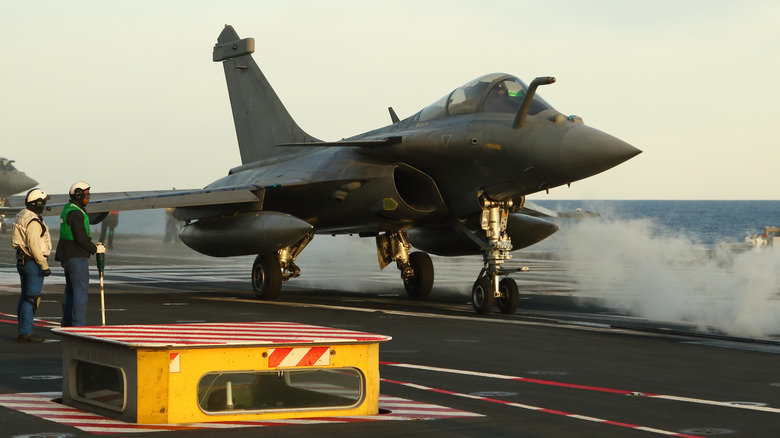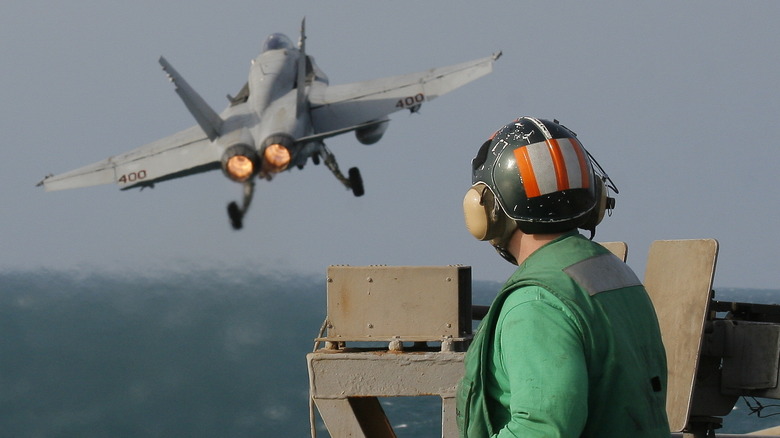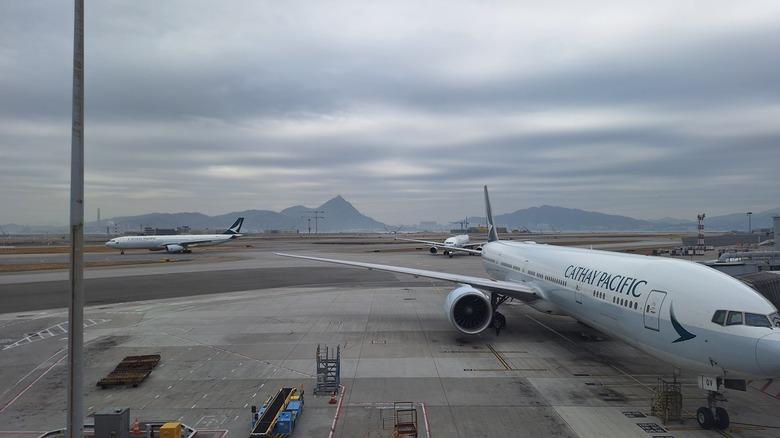Why Some Aircraft Carriers Have A Ramp (And Are They Better Than Catapults?)
Not all aircraft carriers launch planes the same way. Some use steam or electromagnetic catapults to "fling" aircraft into the air. Others use a ski jump: a simple upward-curved ramp that lets jets take off using their own thrust. So, why the split?
Cost is a big reason. Catapult systems, especially electromagnetic ones like EMALS, require complex machinery and major support infrastructure. That drives up both the build and maintenance costs of a carrier. A ski jump, by contrast, is just shaped steel. It's cheaper and needs no dedicated launch crew. That's why navies like the U.K., China, and Russia went with ramps.
But that simplicity comes with limits. Ramps only work well for aircraft with high thrust-to-weight ratios. Heavier aircraft can't get airborne from a ramp at full weight. Catapults can launch almost anything, including heavy, fully armed strike aircraft. That trade-off has shaped how different navies design and operate their carriers, especially when it comes to the U.S.
Why the U.S. still swears by catapults
The U.S. Navy operates a nuclear-powered fleet of carriers, equipped with multiple catapults, and that's no accident. Catapults give U.S. carriers unmatched launch capability, making them some of the most legendary carriers to ever roam the seas. They can launch big, heavy aircraft that ramps simply can't handle. That makes an American aircraft carrier into a floating airbase capable of projecting power globally. There's also the matter of flight deck operations. Catapults launch aircraft faster farther compared to ramps. That throughput matters in combat.
Modern catapults like EMALS also offer launch control by weight and type, and require significantly less power and water compared to steam catapults. But questions have been raised about the reliability of this technology. That's the trade-off: high versatility at high cost. Ramps work well for lighter aircraft and limited missions. Catapults are built for power projection, faster operations, and full-spectrum air groups.
Could ramps replace catapults in the future?
Maybe. Retired Rear Admiral George E. Jessen argued way back in 1995 that most modern strike fighters—thanks to higher thrust-to-weight ratios and vectoring nozzles—no longer need catapults. A well-designed ramp can give aircraft the pitch and lift needed to get airborne using just their engines. In tests, an F/A-18A cleared a 9° ramp at 82 knots and accelerated to flight speed without catapult assistance. It's clear his arguments were heard as more and more navies started adopting ski jumps in their carriers.
This also means future carrier designs could reduce or even eliminate catapults for many missions.
The U.K. is already thinking this way. Under its Future Maritime Aviation Force plan, it's exploring catapults and arresting gear for its Queen Elizabeth-class carriers. Not to replace the ramp, but to expand launch options for heavier uncrewed aircraft. This gradual shift from STOVL to CATOBAR capability signals a blended future.
In short, ramps aren't obsolete gimmicks. They're a low-cost, low-maintenance alternative that could reshape carrier design, especially as more efficient and more autonomous aircraft become the norm.


